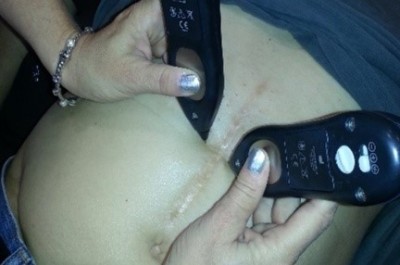Orthopedic Functional Therapy
Do you often feel stiffness in your body with aching muscles? Does this lack of mobility prevent you from carrying out your day to day functions? If yes, you are not alone.
According to a study published in the Journal of Pain Research, almost 20% of the population all over the world is affected by chronic pain – with some experiencing mild symptoms while others are much more severe.
How Orthopedic Therapy May Help You
The focus of orthopedic therapy is to help your injury heal properly and improve your strength, range of motion, and overall functional mobility.
The correction and prevention of deformities, disorders, or injuries of the skeleton and associated structures (such as tendons and ligaments) that causes pain or limited functional mobility as a result of an injury to bony or soft tissue structures in your body require the skilled services of orthopedic therapy.
Moreover, after a critical orthopedic surgery like knee replacement surgery or shoulder replacement surgery, orthopedic therapy allows these areas to heal and return to their normal movement range. It has also shown to be effective against knee arthroscopy and ankle repair after an ankle sprain.
What is MPS Therapy?
MPS Therapy uses Dolphin Neurostim to address orthopedic medicine by treating the underlying causes of disease, using an integrative systems-oriented approach that addresses the whole person – not just an isolated set of symptoms. The joined-up skeleton is the reason why MPS therapy is so important to the orthopedic recovery process.
How does MPS Improve Orthopedic Joint Functioning?
MPS therapy uses Dolphin Neurostim to address certain key areas for improved Orthopedic Functioning of major joints
Parasympathetic ‘Calming’ Points: Imbalances of the parasympathetic (rest, heal, and calming) and sympathetic (flight/fight/freeze) branches of the autonomic nervous system (ANS) are associated with a wide variety of pain and diseases. Designed for short term survival, “upregulation” or persistent tone in the sympathetic system, called stress, will directly decrease circulation and increase muscle tone, which is counter-productive to any therapist’s orthopedic goals.
Treating these stress-reducing points before any therapy session will reduce muscle tone and increase circulation for improved functional outcomes.


Sacral Balancing: MPS therapy performs a sacral balance to re-balance sacral articulations to “restack” the spine and decrease pressure on the nerve roots of the spine to improve core strength & reduce chronic body-wide pains.
Nerve Roots (radiculopathy): MPS Therapy is the 1st to bring this physician-based medicine onto western therapy. The MPS theorizes that applying cellular changing DC microcurrent to paraspinal acupuncture points relaxes muscle contractions responsible for nerve root entrapment (called radiculopathy or impingement) which promotes symmetrical joint movement and improved functional outcomes (& reduced pain) throughout the somatic nervous system.



Scar Therapy: MPS Therapy integrates the release/reduction of scar tissue into orthopedic therapy. We are the pioneers of “scar re-polarization” therapy and the first research center to introduce this potent therapy into Western hands. It is reported that up to one-third of patients undergoing common surgical procedures report persistent or intermittent pain, called chronic post-surgical pain (CPSP), of varying severity at one year postoperation (Lancet 2006).
Scars and traumas injure fascia and activate stress. The “fascia-stress” theory of pain suggests reducing scar size will release fascial restrictions and improve functional movement in orthopedics. Scars strain and pull fascia, which connects to all muscles and organs of the body. Scars create the formation of adhesions inside the body, reducing muscle performance, and produce pain. Scars also block metabolism and circulation, producing muscle stagnation. This multi-pronged effect of scars is now proven to systematically influence chronic pain, 90% of which is far removed (distal) from the scar injury site.
“With 65 million physical scars surgically produced annually from surgery, the “Fascia-Stress” Theory of pain may help explain the causation of suffering for so many hard-to-treat (intractable) chronic pain sufferers.”
Why You Must Try MPS Therapy Right Now
MPS treatment protocols use a multisystem approach, integrating these numerous treatment techniques into each and every treatment session for improved functional orthopedic therapeutic outcomes.
Why live in constant pain when the right treatment for your problems is just one click away?



